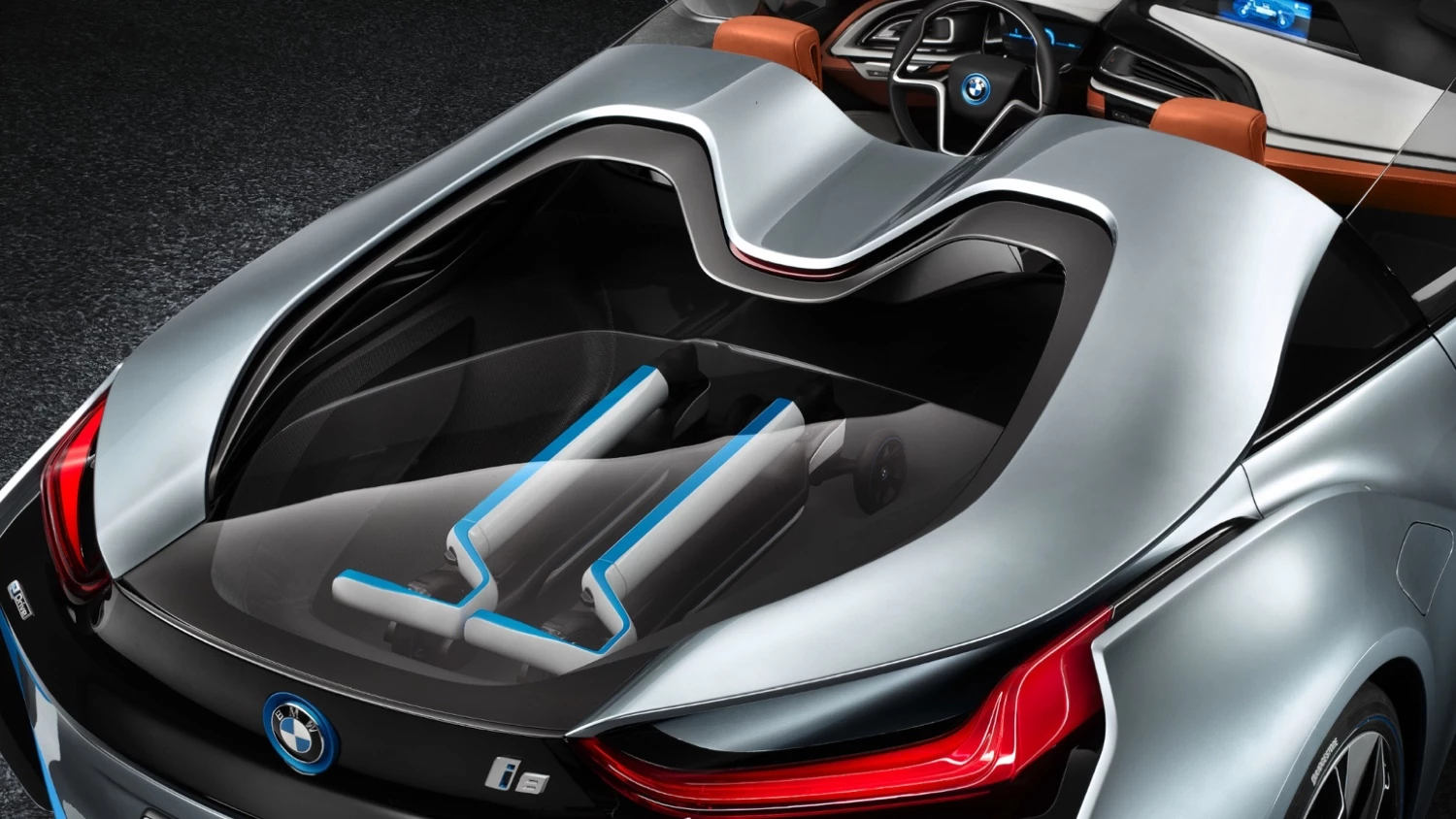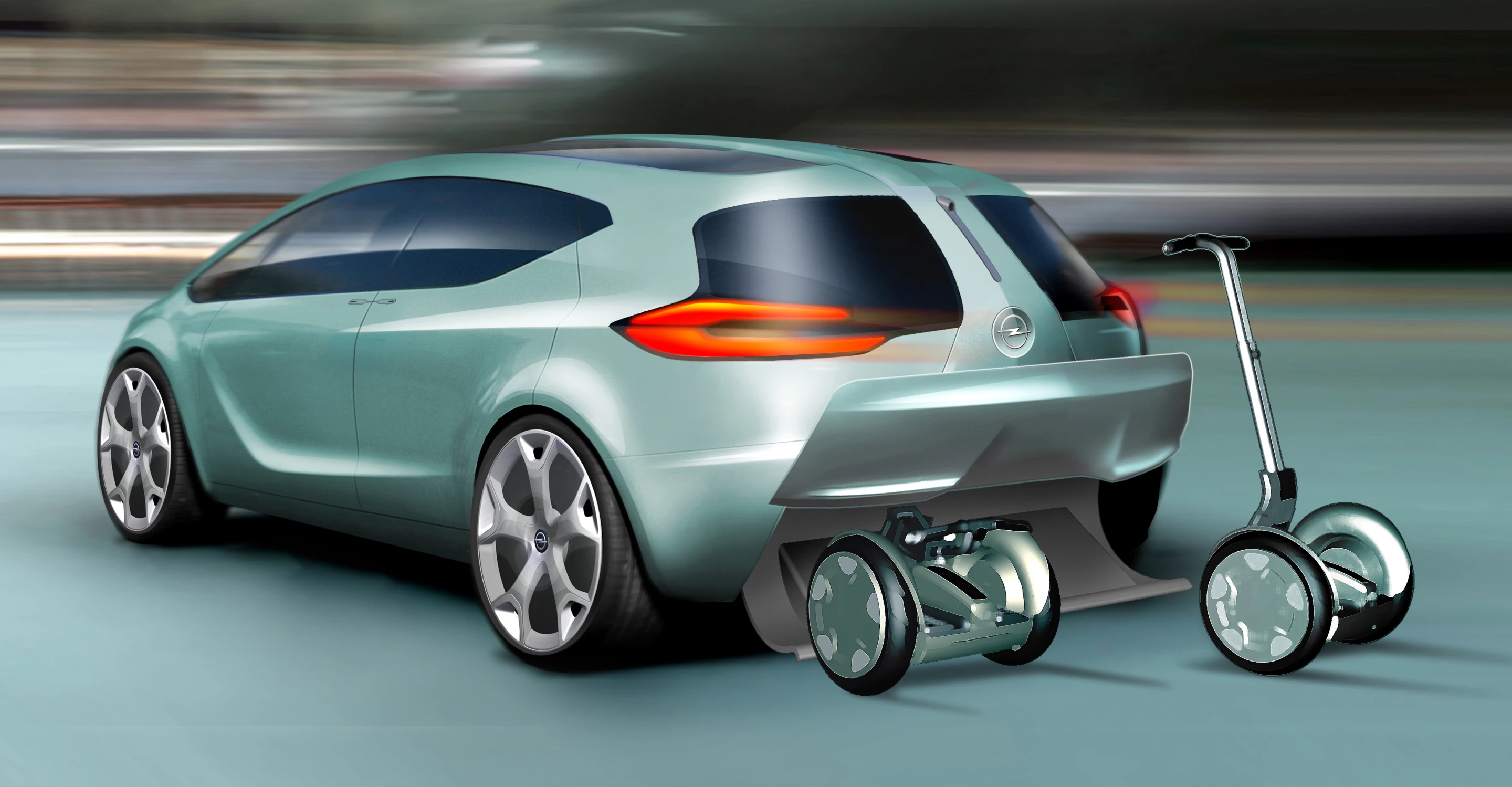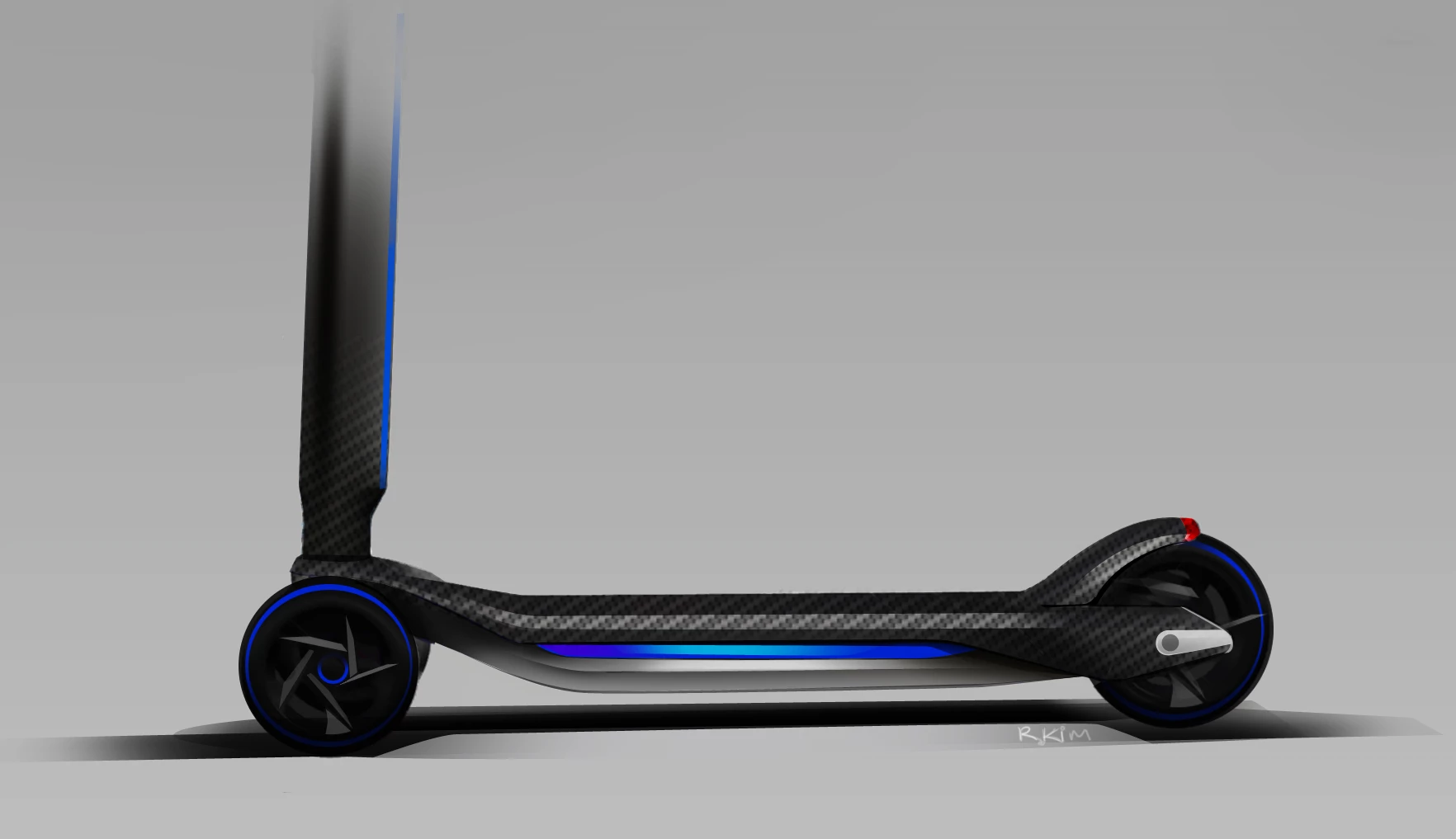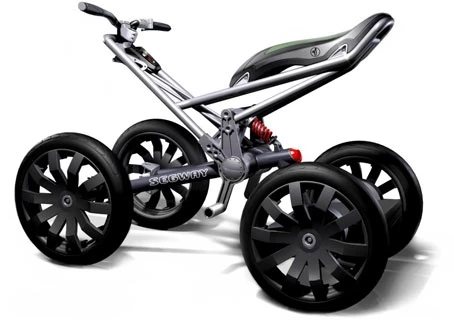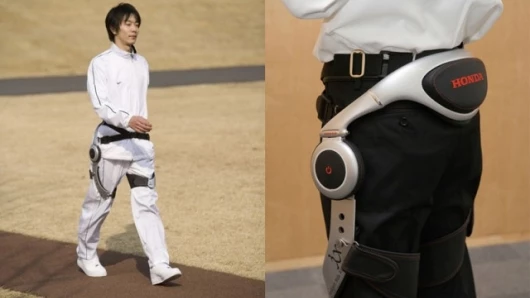One of the many interesting trends evident at Auto China in Beijing last week was the ongoing development of vehicles offering dual modes of transport - cars containing another transportation device of some sort. China is facing all the same pollution and congestion problems as the rest of the world, but on a much greater scale. For Chinese consumers it seems that having a primary vehicle contain a smaller electric "Transportation Appliance" offers a more comprehensive transportation solution.
The transportation gap
As car ownership grows rapidly in China, India, Russia, South America and Asia in general, congestion grows too and parking in city centers becomes prohibitively expensive. Getting from A to B often involves mixing transportation modes, and a car will increasingly only get you part of the way to your destination in many countries in the world - particularly in China where the number of electric two-wheelers on the street is already overwhelming, and the mainstay of China's personal transportation spectrum. Consider this! In 2009 Chinese consumers purchased 13.6 million cars to become the world's largest automobile market. China had a national carpark of electric two-wheelers of 120 million in 2010 and electric scooters have been available for only the last seven or eight years, indicating sales averaging at least 15 million a year during that period.
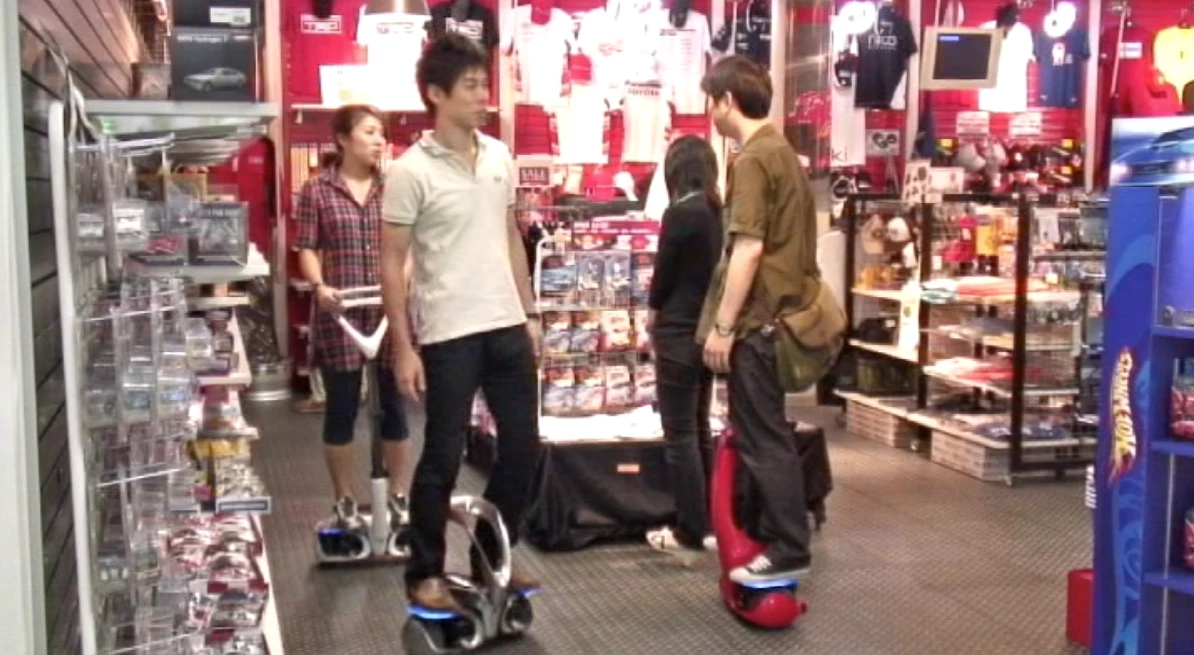
That means the electric scooter has been the most prolific form of motorized personal transport in China by a fair margin for several years. It's hence not hard to see why Chinese manufacturers might be wanting to create a bridge between two and four-wheeled transport. Because two-wheeled transport is more popular than four-wheeled right now, two-wheelers are cheaper to run and buy, and they're a perfect adjunct to a car, or for want of an apt comparison, the "Mothership."
A larger vehicle, particularly an electric vehicle or hybrid electric vehicle with large capacity battery, can ensure your miniature EV is charged and ready to go when called upon.
China will have 150 million electric bikes on the road by 2015. Interestingly, the numbers suggest that electric bike sales in China are on the wane - the forecasts add 30 million e-bikes over the five years from 2010 to 2015.
I think this grossly underestimates the numbers of electric two-wheelers currently being sold.
Please note - if you live in America, you probably won't have experienced the urgent needs of these countries to solve congestion problems - America's geography is unique and quite different to most countries.
In terms of traffic flow, two wheelers offer a much more fluid and dense traffic flow than cars, and unless radical surgery is performed on Chinese roads, or complete infrastructures such as in General Motors' proposed EN-V mass personal transport concept, Chinese roads will come to rely on the mixing of high proportions of motorcycles and other small EVs to overcome the congestion.

In the future, the number of transportation options most humans use in any given journey is expected to rise - cars will only be part of the solution as new forms of both public and personal transport appear such as the electric scooter, the Segway, Toyota's iREAL, and a host of two-, three- and four-wheelers which fill the gaps between cars and public transport, public transport options increase, and the entire mobility spectrum is used.
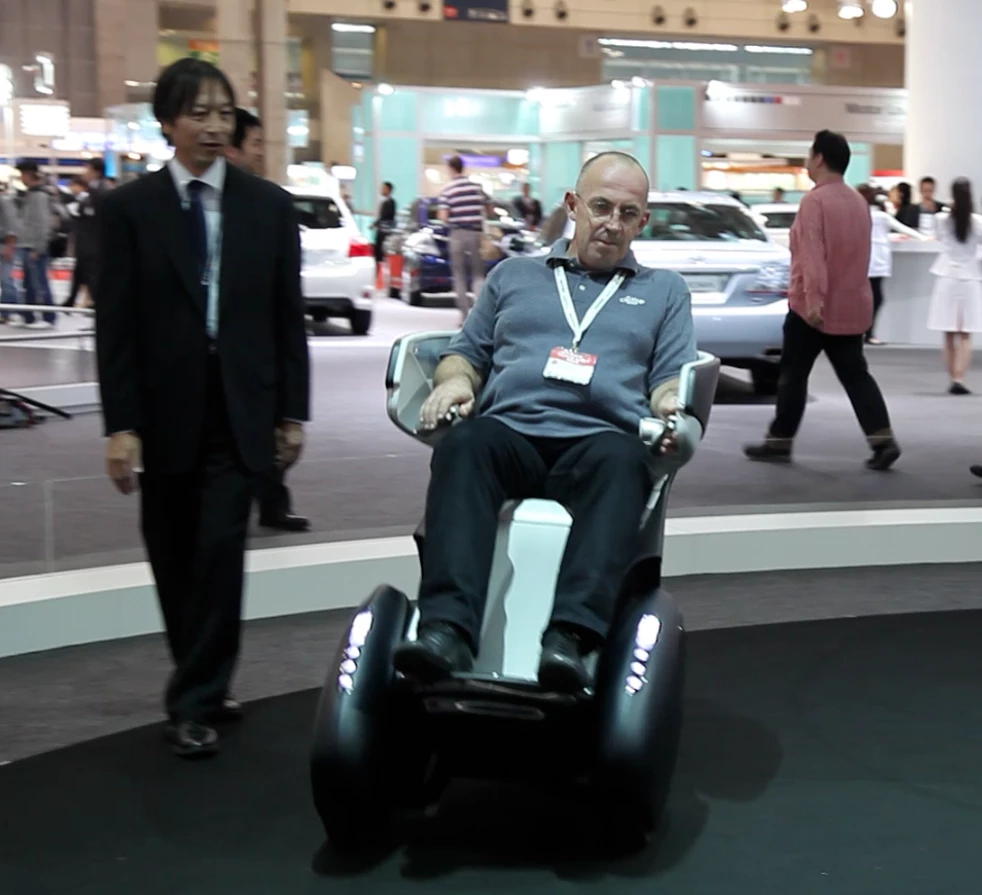
At the same time our cities are becoming congested, our populations are getting older - Japanese companies understand this better than most, as Japan's population is already a decade ahead of the curve, but China recognizes the aging population problem will hit it hard due to its one-child policy of many decades.
Walking is obviously the best policy if you have the time and physical resources, but time can be a powerful motivator if it means spending 15 minutes with the kids at bedtime ... or not.
Time means different things to different people, but if an electric fold-up bike cuts 15 minutes off your journey to the salt mines each day, that's an extra three hours a week to make the most of your life. So the pay-off in time is often very worthwhile for having an extra mode of transport on hand.
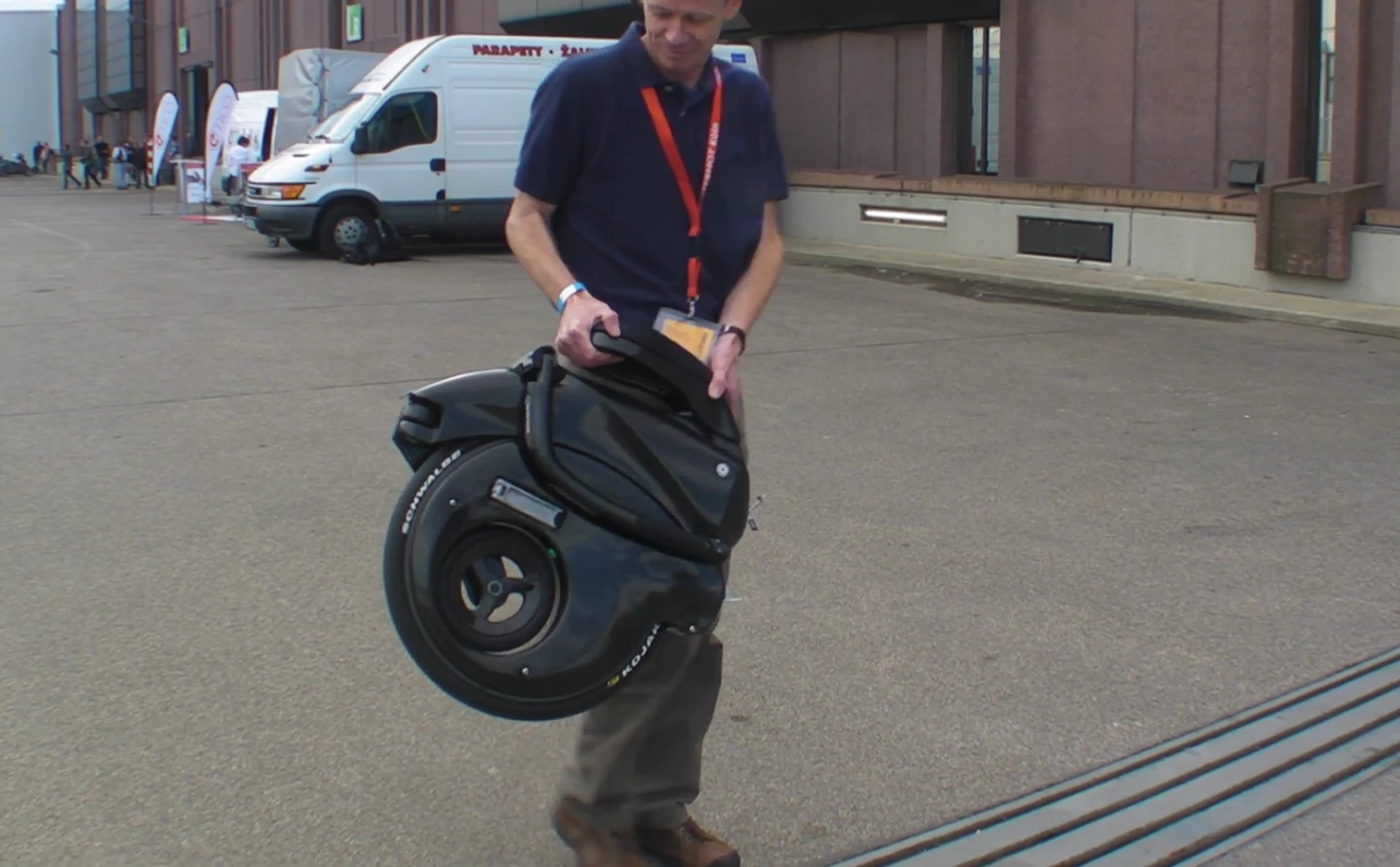
On top of that, the world population is aging rapidly. We've been living longer and having less children, and it has finally begun to catch up. And baby boomers in their old age will be just as demanding as they have been at every other point on the life journey.
According to United Nations data, the world population of 80+ year olds will quadruple between now and 2050. By then there will be nearly 379 million octogenarians in the world - enough to speak loudly in demanding its mobility needs be met.
Painless mobility doesn't last forever, but with some clever help from mobility aids and exoskeletons, this might be extended by ten maybe 20 years.

We now have the design, manufacturing know-how and materials to make very small, very efficient personal mobility appliances that can increase the unaided mobility of the population well into old age. The biggest issue for first world countries in the introduction of such systems will be liability issues and regulatory approval in the myriad state jurisdictions.
A small electric vehicle inside a car adds considerable amenity and a logical way of mitigating the inevitable urban congestion China will face. China currently has 125 cities with more than a million people. America has nine cities that large. Between now and 2030, China will need to accommodate a further 350 million people in its cities and another hundred cities with more than a million people will be added to the landscape. Clearly, traffic congestion will reach new heights as the world's most populous country grows rich.
Against this background of changing personal transportation needs in China, both Geely and BMW used Auto China to propose cars with inclusive last-mile transport - vehicles offering two modes of transport.
Geely's McCar 2

Last year at Auto Shanghai, Chinese manufacturer Geely showed the McCar - a purpose-built two-mode transport package of an electric car and three-wheeled EV combo. That's the first McCar below.

This year the whole package was presented as V 2.0 and is far more refined and production-ready - expect to see the McCar in production probably sooner than later, and the good news is that it also interfaces with a range of other mobility options beyond the three-wheeler, including a wheelchair and fold-up bicycle

It's still a prototype but Geely recognizes that dual-mode transport will eventually become necessary for many people in China and there is growing pent up demand now.
You might already know the name Geely - it owns Volvo and we've written before about its sustained growth and grand aspirations. Zhejiang Geely is a public company controlled by Li Shufu, a young, self-made billionaire who is being heralded by many as China’s Henry Ford.

We can expect some real creativity from this company in its future product offerings, as it has moved swiftly under Li Shufu's bold leadership and at just 48 years of age, he's in a prime position to shape China's transportation system for the next few decades.
The McCar now looks close to production-ready - if it does make manufacture, apart from facilitating the incorporation of a second mode of personal transport into one's lifestyle, it will obviously be a perfect companion vehicle for anyone who is mobility handicapped with its built-in ramp and wheelchair option.
BMW's i8 Concept Spyder and its two three-wheeled kick scooters
In addition to being the car to first wear BMW's eDrive emblem (the designation eDrive will identify the drive technology for all future electric and plug-in hybrid cars from BMW), the i8 Concept Spyder carries two three-wheeled electric scooters in the back.

The emergence of the important eDrive emblem on a car with a pair of electric kick-scooters in the rear signifies BMW is also well down the road of thinking about two-mode transport.

There's also the exciting prospect that BMW is getting set to release yet another personal transportation device smaller than anything it has previously been known to be working on.

Design sketches of the scooters have been released (more in the image gallery for this article) but no details whatsoever have accompanied the images.
It appears the scooters have two wheels at the front, and a single wheel at the rear, and that the handlebar connects to a steering mechanism for the wheels.
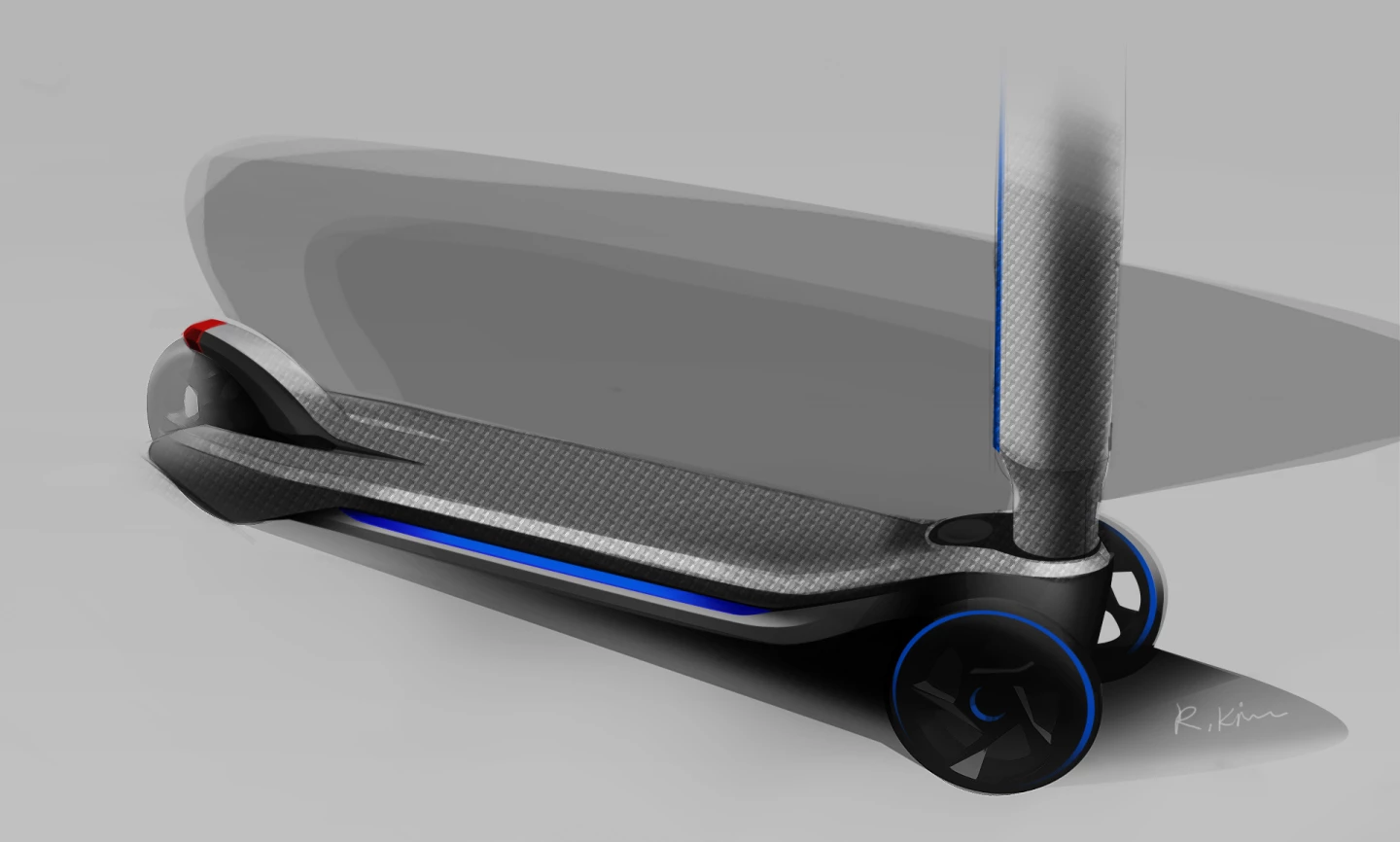
The sketches show visible carbon fiber weave, so it can reasonably be assumed the emphasis is on extreme light weight, like the car it comes with.
Any thoughts as to what BMW might have in store can be contributed by the comments section.
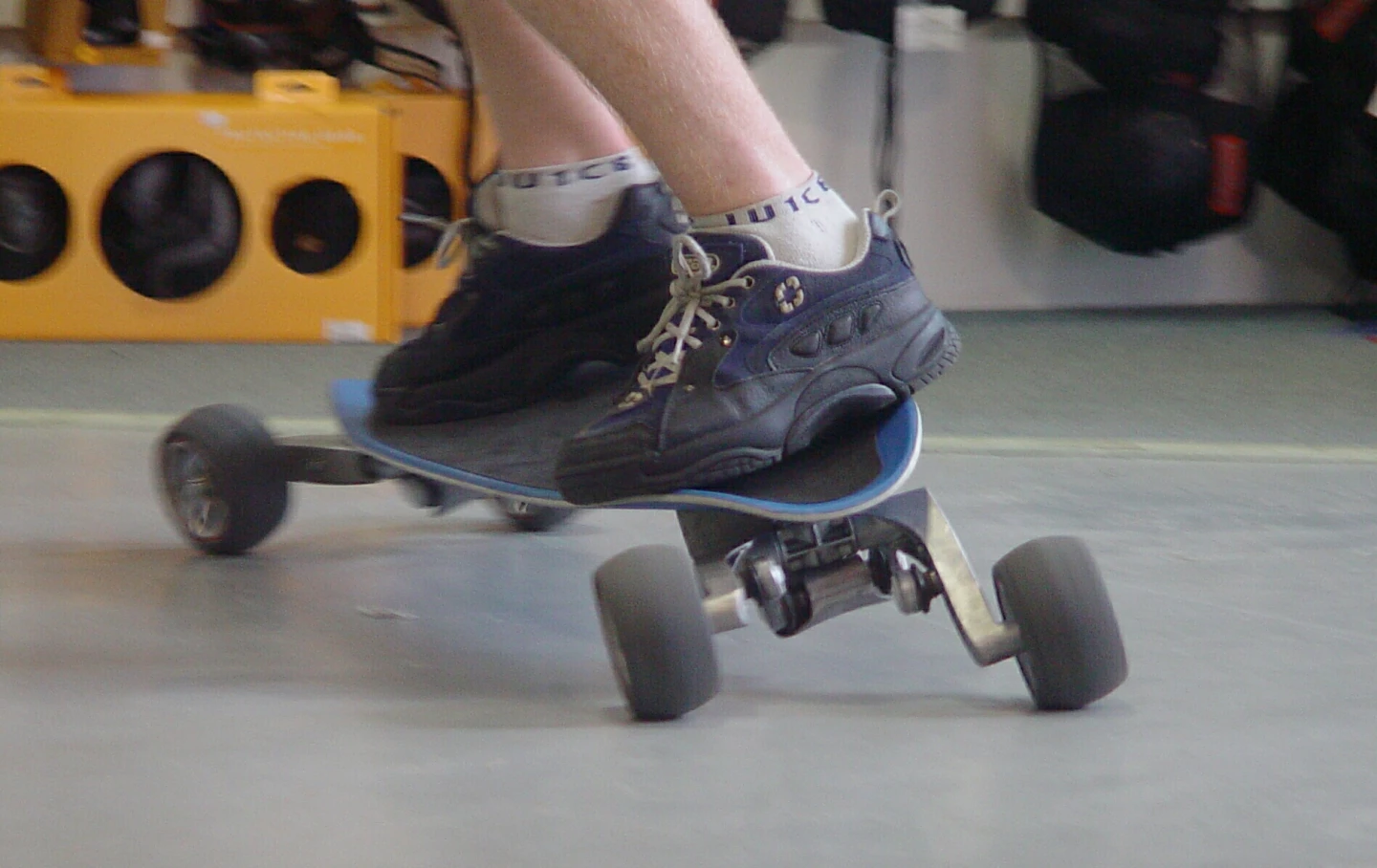
It should be noted that BMW has been working in this area for many years. A decade ago we tried a BMW skateboard dubbed the Streetcarver which was tested by BMW in some markets before being withdrawn. As you'll see from our extensive write-up back then, we were very impressed.
The BMW mechanism offered many advantages over a traditional skateboard's design, but it turned too quickly and went too fast for mere mortals. A Streetcarver with electrically-controlled wheels though, would have electronic brakes by reversing the motors, and as you can see from the image above, it offered incredibly turning ability and could do sustained drifts if you were brave enough.

The new BMW three-wheeled kickscooter does not use the same mechanism as the Streetcarver, but I'd be surprised if it wasn't very clever, simple, and very easy to use and ride. BMW's long history of producing superb motorcycles and user-friendly performance vehicles demands this be a significant step forward and I suspect it is. BMW does not just drop a few kick scooters into the back of a key concept car without it being part of a much grander plan.
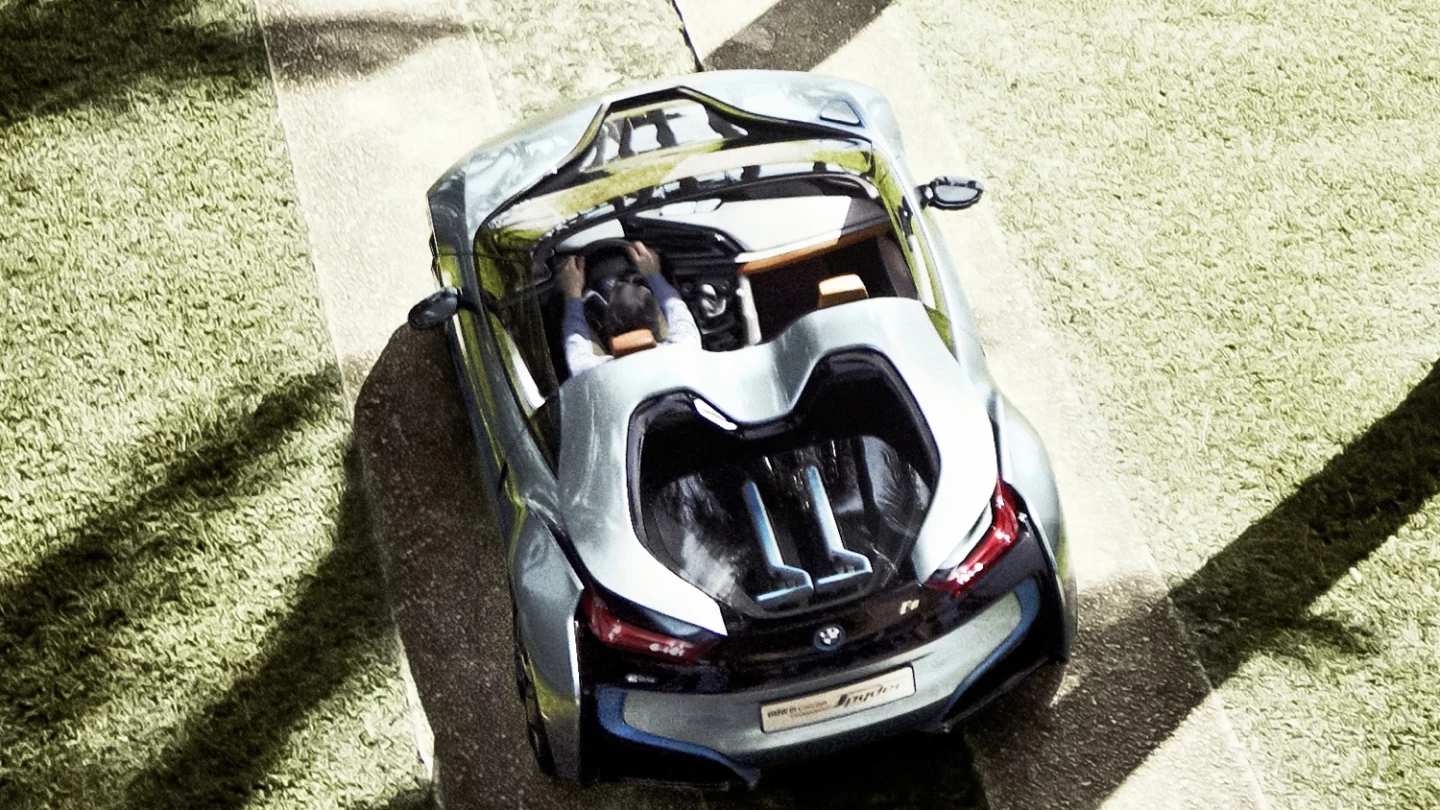
The likelihood that last mile or dual-mode transport will become necessary for many populations at some point in the future, can also be seen in the number of other automotive manufacturers developing similar micro-transportation devices.
The Geely McCar 2 and BMW i8 offer recent examples of a car incorporating secondary transport but there has been a lot of interesting activity over recent years.
General Motors and Segway

The vehicle-in-vehicle concept was explored General Motors in its 2007 Flextreme Concept - this was during the development relationship with Segway which spawned the EN-V concept, and the potential for Segway to play a major role in the evolution of dual-mode transport is obvious.

The Segway offers an easy-to-ride, very fast, very safe and agile personal mobility solution - it remains the "Rolls Royce" of personal mobility solutions, and it is small enough so that two can be easily carried in a car, especially if you think about where to put it when the car is being designed.

General Motors' 2007 Flextreme Concept incorporated dual Segways which were carried in tunnels at the lower rear of the vehicle.
The Segway mechanism is used by tertiary institutions and research laboratories all over the world as a basis of myriad custom machines, and I am certain there are some wonderful commuter conveyances yet to emerge from the Segway platform.
The best concept we've seen based on the Segway balancing and propulsion unit is the Centaur.

The Centaur was a lightweight, four-wheel concept vehicle combining Segway's proprietary gyroscope-based dynamic stabilization technology with advanced propulsion and suspension systems, and an intuitive user interface to create a unique four-wheel device that is easily controllable on two or four wheels.
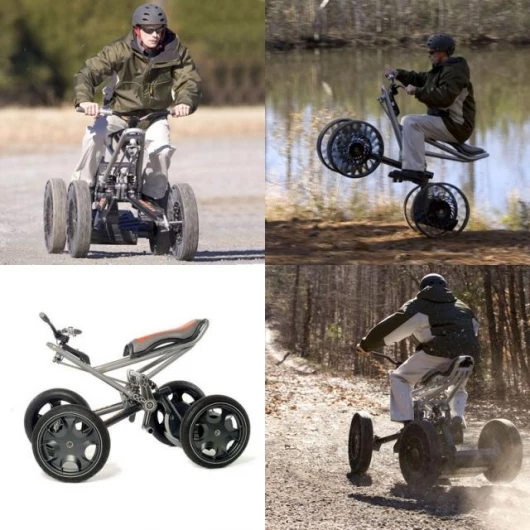
You could wheelstand out of sight the first time you ride it. Unfortunately it didn't see production, but you can see from the lightweight frame, it wouldn't take much to build a lightweight quick-assembly Centaur that resides in the rear of a car in a very compact package.
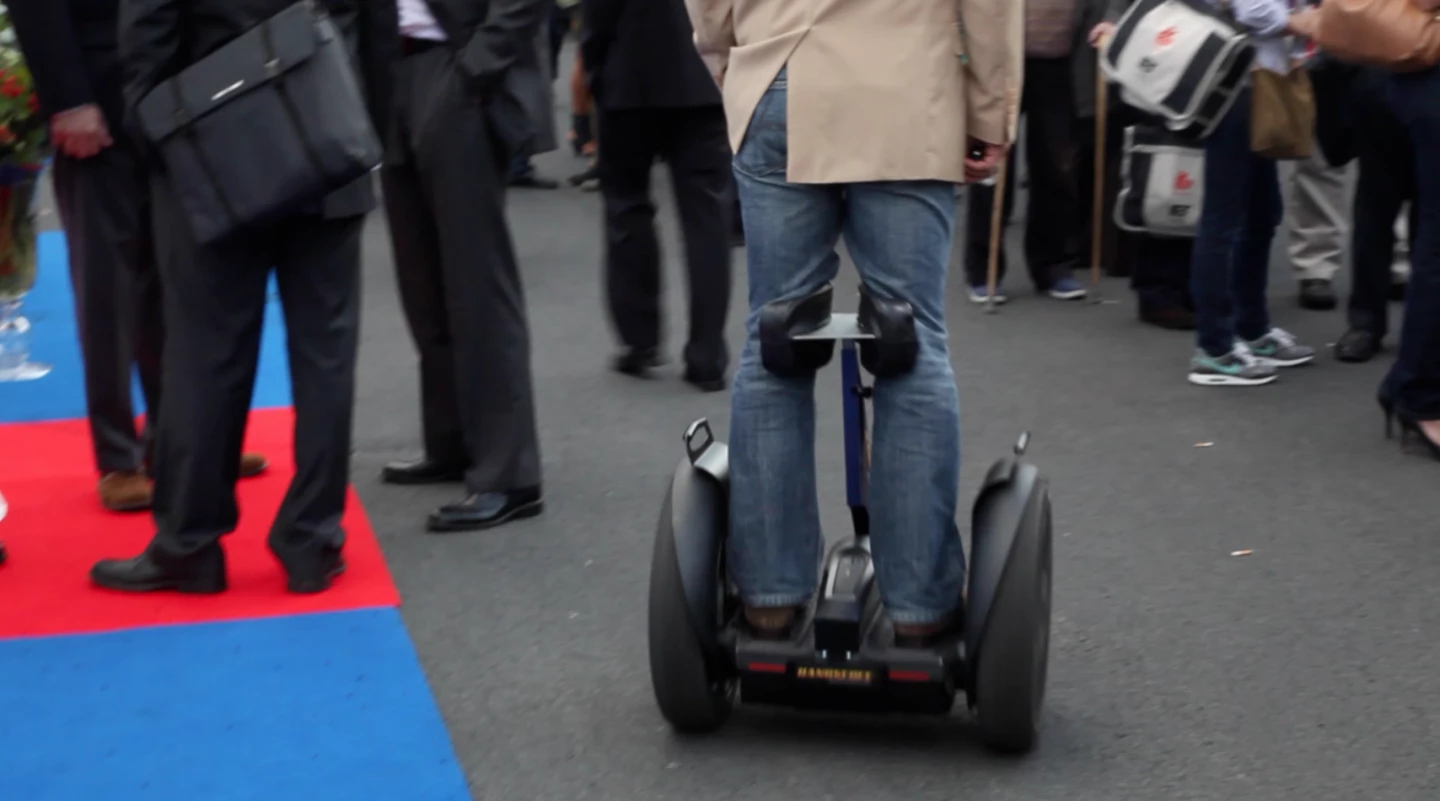
The Hands Free Transporter is built in Germany and also uses a Segway base. The end result of building what was originally conceived as an all-terrain device to enable film and TV cameramen to pan smoothly, has since evolved into something much more.
Honda's U3-X, MotoCompo, walk-assist and much more

Honda's motorcycle leadership and the company's renowned miniaturization skills has seen it develop several small EV scooter prototypes that have been shown at the last two Tokyo Shows, which all adds up to Honda looking better placed than any manufacturer in preparing for the advent of dual-mode transport.

Honda is now promoting its U3-X electric monowheel in Europe, indicating that it is assessing the market for launch, and it has been promoting the experimental vehicle in many other realms too.
Testing of the vehicle in Japan is well underway in pilot projects and it would seem commercialization of the U3-X is inevitable. It is a masterpiece of engineering with its amazing two-direction wheel, and at just 10 kg, and with measurements of 24 inches by 12 inches by 6 inches, it is one of the lightest and smallest motorized personal transportation devices ever conceived.

The U3-X was first shown at the Tokyo Motor Show in 2009 and was also spied lodged in the door of the EV-N electric vehicle on show that year.
A prime example of just how far R&D has advanced personal transport in such a short time, is the Embrio, a self-balancing Unicycle concept shown by Bombardier (now BRP) in 2003.

The design study anticipated what type of personal transport we might be using in the year 2025. The Embrio concept was developed by BRP using technologies it expected to achieve mass market viability in the ensuing 22 years and I remember writing the story, and thinking how much it sounded like science fiction.
Though Honda’s U3-X is still experimental, only runs for an hour, isn’t as fast as the Embrio and is not hydrogen fuel cell powered, it is already in prototype form and weighs just 10 kg, rather than the 164 kg weight BRP expected of the Embrio in 2025.
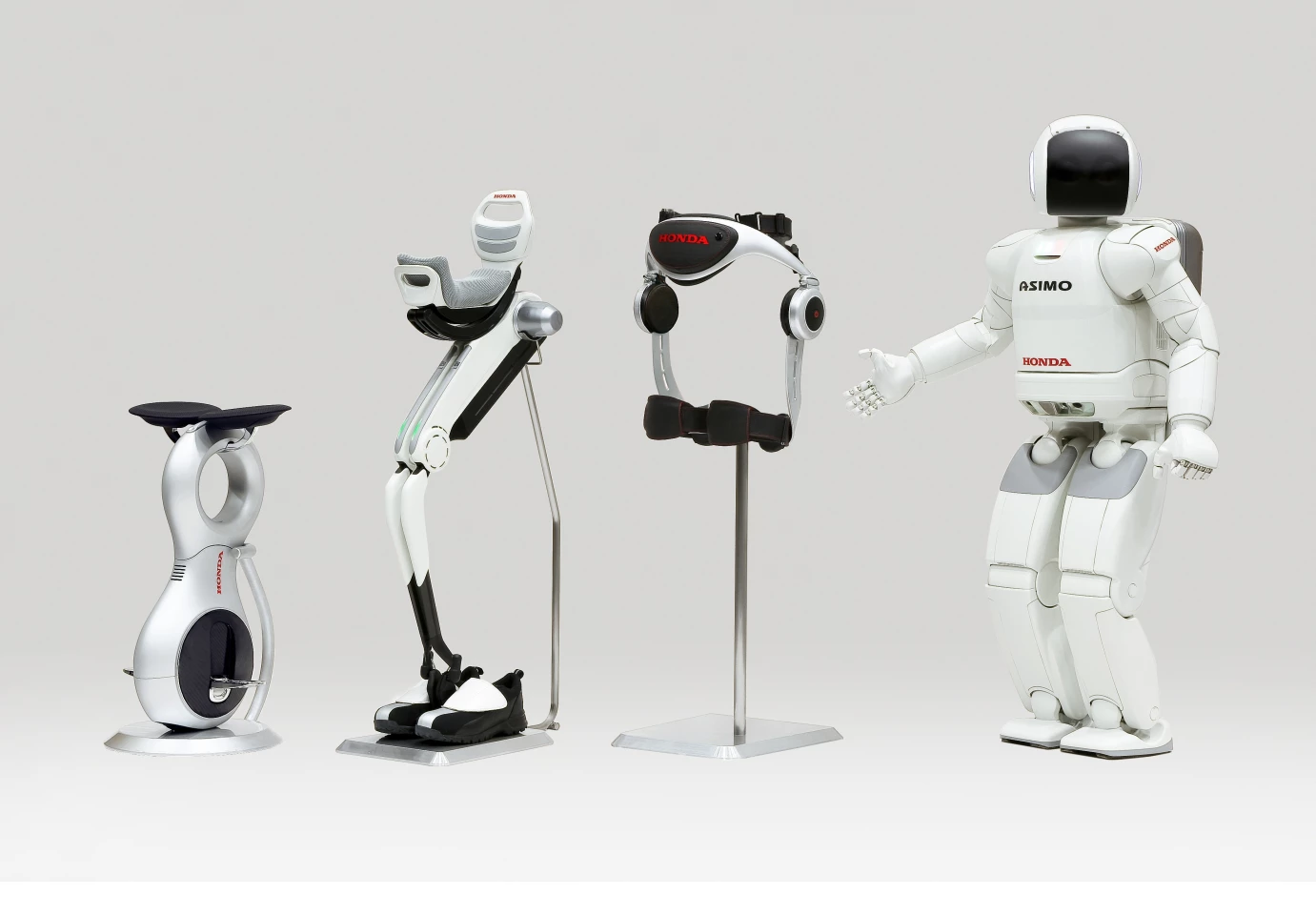
Nine years later, Honda’s U3-X is one sixteenth of the weight of the Embrio envisioned for 2025 – and 2025 is still more than a decade away.
Honda has more mobility solutions than just the U3-X however, as its mobility products include the walk-assist and worker-assist devices, and more recently at the 2011 Tokyo Motor Show it showed the Honda MotoCompo concept - another fold-up electric scooter.

So what? Well the Motocompo name has a history at Honda. It marketed a tiny two-stroke 50cc fold up scooter as a trunk bike for sub-compact cars thirty years ago. Honda knows this market well already.
Nissan's "segway skis"

Very little information has leaked about these devices which have been developed with Nissan's assistance through AIST.
The device has been seen in several different guises, one with the two footboards joined, and others where they have been separate, like skis.
Each balances on two wheels with a ski-pole-like handlebar to help the user maintain balance while in motion and a motor to drive the device at around 5 km/h (3 mph).
When joined together tilt sensors inside the footboards detect the user’s shift in weight to turn. Sensors can also detect nearby obstacles allowing the possibility of the device being used to carry luggage that follows its owner around.
Suzuki's 2007 Pixy + SSC Concept

Suzuki addressed the same issue in a slightly different manner with its 2007 Tokyo Show concepts of the single person Pixy, which could mix easily with pedestrians and then be joined in an SSC (the larger structure). It was never going to fly, but you can see the company attempting to find solutions for some of the problems looming ahead for society.
Toyota's Winglet

The world's largest automotive manufacturer has seen this problem coming for more than a decade, which is why it purchased the rights to a self-balancing technology from Sony eleven years ago, with the project eventually yielding the Winglet - a Segway-like device that weighs just 10 kg.
The Winglet comes in three forms - one with handlebars, one with knee-controls, and one you control with the lower legs. Most importantly, the Winglet is ridiculously easy to use.
I tried it back in 2009 and simply stepped on and rode it with not a hitch. It isn't as stable as a Segway for obvious reasons (it weighs less than one fifth), but the controlling software was obviously extremely good and I had no trouble confidently riding it through a congested space full of people within seconds of stepping aboard for the first time.

Public Affairs staff in this situation have a tough gig. I was one of the first journalists they let near the device and they were really concerned I was going to bend it or maybe even break a leg and reduce tens of millions of R&D to zero inside a few seconds.
My "minder" saw her corporate career flash before her eyes when I started riding it backwards, but she needn't have worried because the Winglet responded exactly as I thought it would and simply did my bidding.

Even a brief taste the Winglet left a big impression. It was very compelling in that it offers much of the grace and fluid movement not dissimilar to ice-skating, but with complete control. Once the modders get their hands on a Winglet ...

The Winglet is quick enough by walking standards to offer a nimble and fast machine for anyone standing aboard - adventurous adults and kids will love the knee and feet controlled versions but it's not a machine for the mobility handicapped, or confidence handicapped.
You can see from the imagery that the promotion of the Winglet has already begun in Japan and I expect to see the Winglet on the market as a stand-alone device within a few years.
The Winglet is hellishly impressive - it weighs almost nothing, responds to logical body English and covers one aspect of dual-mode transport for Toyota. It won't cover the whole spectrum of user needs though, and for that Toyota has a vast research network and a whole division producing partner robots which will also be responsible for the Winglet.

Toyota and the Yamaha connection
Toyota has a close relationship with motorcycle manufacturer Yamaha, which is also known to be working on a number of such micro devices, and my bet is that Yamaha's solutions will not only fold, but fold themselves.Yamaha has shown a number of concepts over the last few years which would make ideal candidates as last-mile-transport enablers.

The first was the company's Deinonychus prototype of 2005 which took full advantage of the greater chassis design freedom afforded by in-wheel motors, with 2WD and inbuilt "Stretch & Shrink" functions in the vertical and horizontal directions. The aim was to be able to build a motorcycle which could adapt on the fly to different conditions.
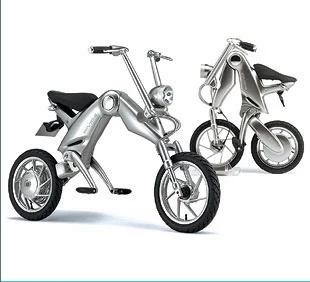
The following Tokyo Show, Yamaha took the adjustability concept a step further and the Divide Concept it showed in 2007 was an EV which folds at the press of a button to a rollable but far more compact shape for storage and transport.
The concept was to create a self-folding "metal art commuter" which could be transformed into a compact, easy-to-push shape and that could stand proudly as an "art object" in any room. At the time, Yamaha was attempting to overcome the premise that a an electric motorcycle, being odorless, needed a place in the parking lot.
Yamaha recently showed a number of very clever electric-assist bicycles for both itself, Toyota and Lexus - when the time comes for Yamaha to deliver in this area, I expect to see some very innovative micro devices.
Volkswagen bik.e
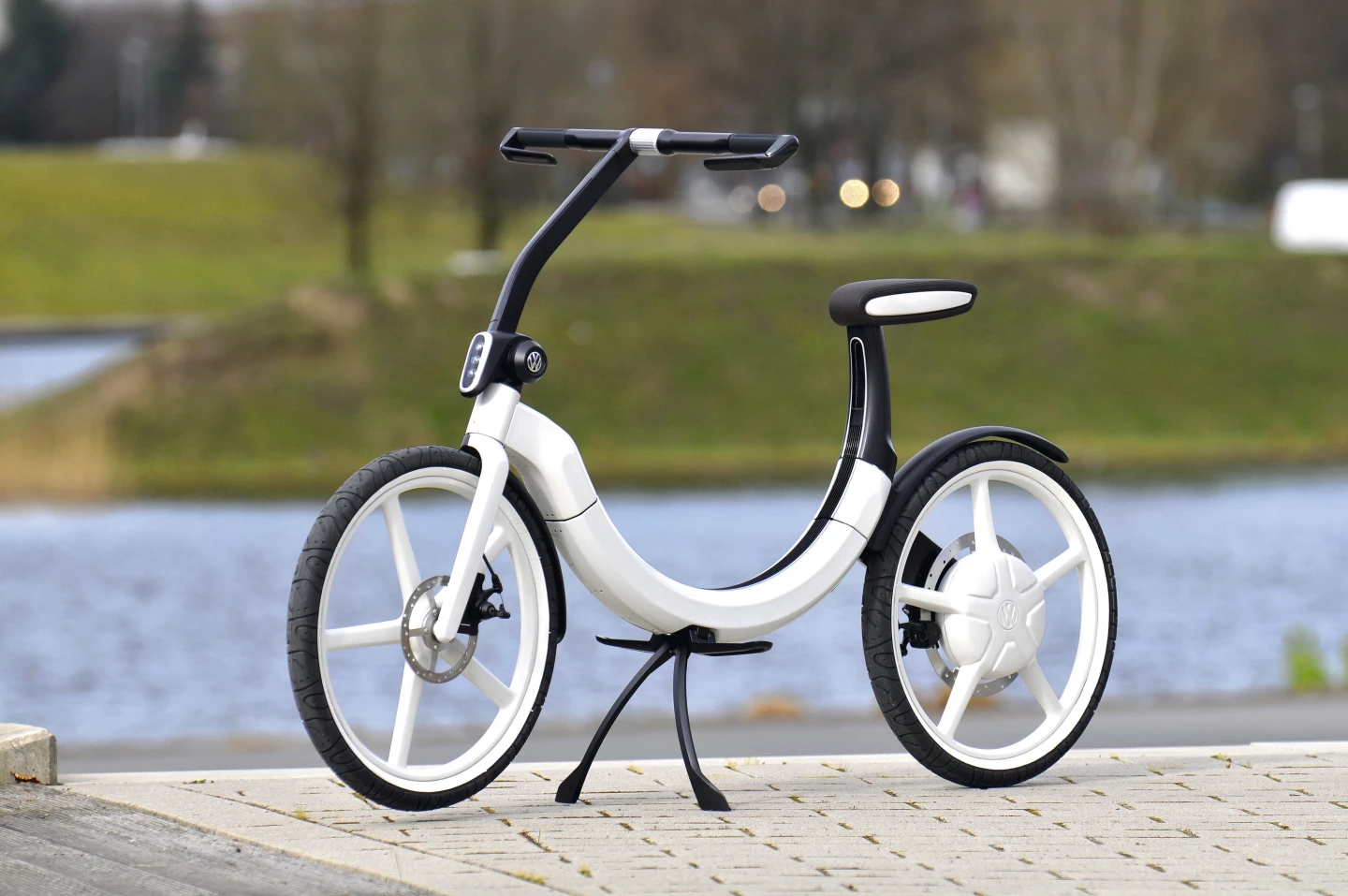
Volkswagen's answer to adding a second mode of transport to its vehicles appears to be the bik.e, which was shown in Beijing the last time Auto China was held in 2010.
Volkswagen's bik.e is a micro mobility concept created from an ingenious folding electric bike with a range of 20 kilometers (12.5 miles), and a fully-folded footprint identical to that of a car spare tire.

At 20 kg, the bik.e is small enough to be added to most vehicles without any noticeable penalty in performance. Indeed, at 20 kg, it's just a tad too heavy to be carried.
How to add a second-mode of transport to your car

More bicycles than cars are sold each year. The bicycle is also man's most prolific transportation device of all time as it has always outsold the car.
So, for the greatest flexibility and ease-of-use, a fold-up bicycle makes the most sense as the second mode on hand, and if you're up to the task physically, the cheapest option for adding a second mode of transport other than walking is most likely the fold-up bicycle.
There are many fine designs for fold-up bicycles on the market, with the cheapest costing just a few hundred dollars, through to superb high-end models from Brompton, Moulton and Dahon that will tip the scales at under 10 kg.
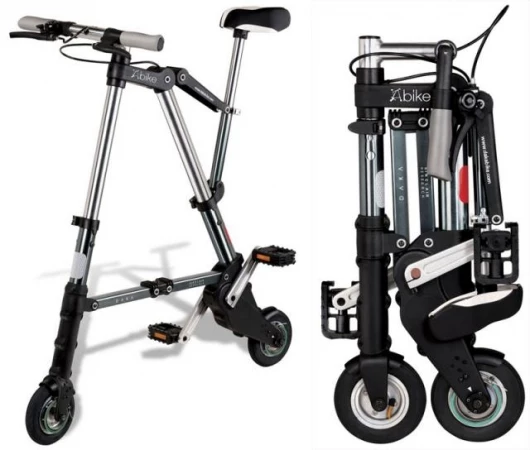
The US$300 A-Bike is the lightest and smallest folding pushbike we're aware of at just 5.5 kg (12 lbs) and it folds to a 26” x 12” x 6” (66 x 30 x 15 cm) package, making it so small you can almost throw when in the boot as insurance against a long walk.
In 2006, we wrote that the A-bike was "the first viable foldable bike for those who wish to mix modes of transport and we see it as invaluable for yachts and motorhomes and campers where a simple vehicle for short-distances is a boon but storage space is limited."
The A-Bike adjusts to fit all rider sizes, and there's a compatible high capacity lighting system available that doesn’t compromise the folding. It should be pointed out that the compromise in choosing the lightest, most compact fold-up available is that you get pneumatic tires as your sole form of suspension. Smooth roads and short distances are probably the limit of this device.
A similar device to the A-bike is the Strida, which has been targeting boat shows promoting the Strida as compact stowable land transport for yachts.

There are more than 130 folding bike manufacturers and all of them produce bicycles designed as supplementary transport – designed to be carried in a vehicle for last mile transport, or on a train, plane, boat or bus as ground transport on arrival. Accordingly, most come with their own carry bag, but a prototype concept from Airnimal promises a new level of functionality. The concept involves the hard carry case doubling as a bike trailer with a significant carrying capacity.
Motorized transport comes in two forms - conventional and unconventional. We'll deal with the conventional first.
Fold-up Electric bikes
The fold-up EV bicycle is the most logical option for fast second-mode transport as it can be supplemented by the rider's power and most people know how to ride a bicycle to begin with.There are two types of electric bike - those with pedals and those without. If you suffer from even the slightest trace of range anxiety, go for the pedals - they ensure you never have to push your bike home, help keep you fit and having pedals will ensure you get the most out of your finite electricity supply.
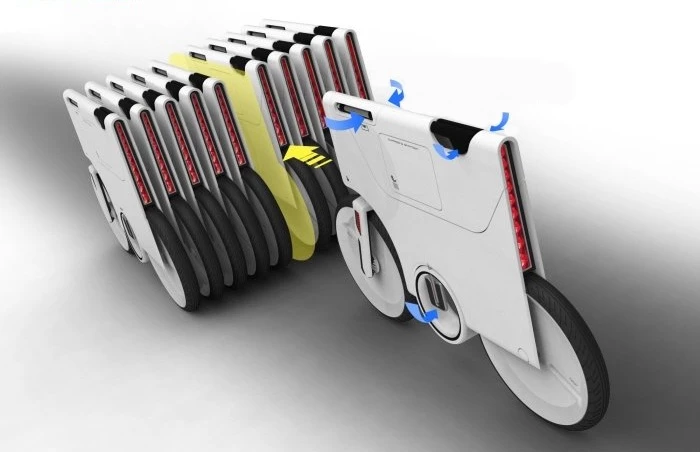
Most fold-ups to this point have been pedelecs, but in the quest for a smaller and lighter information appliance, pedals are certain to be left out of some viable designs. In this instance above, the folding electric bike uses both, very cleverly.
Karbon Kinetics' Gocycle
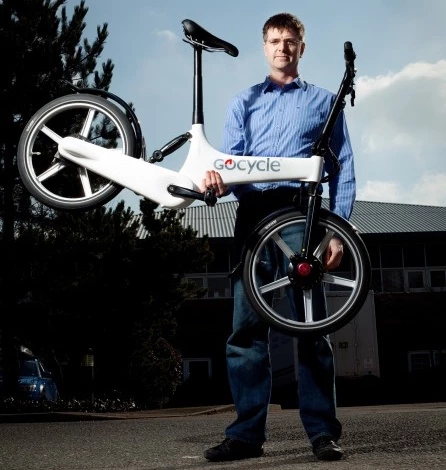
The Gocycle G2 weighs in at just 32.8 pounds (14.9 kg) thanks to an injection-moulded magnesium frame.
The G2 uses a 250 watt electric motor with in-house controller that gives it speeds of up to 15.5 mph (25 kph) in pedelec mode or 20 mph (32 kph) in empower mode.
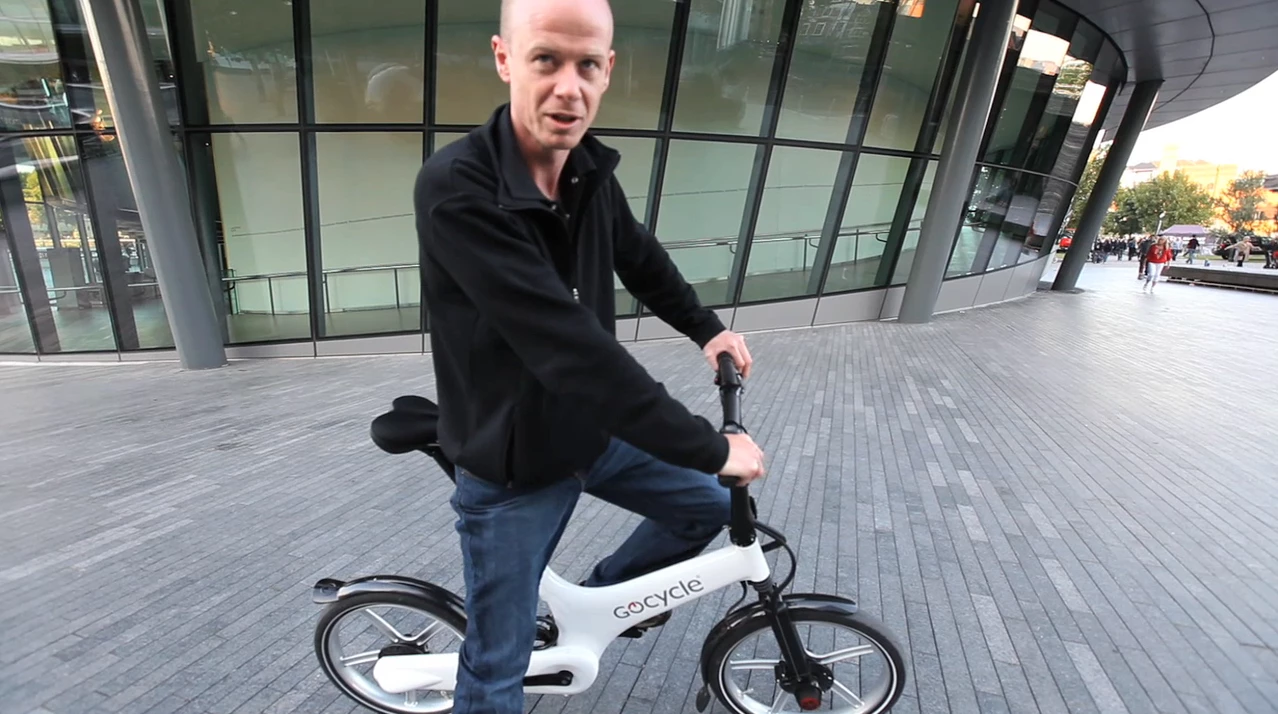
The G2's in-frame 11Ah/22V battery can deliver 40 miles (64km) in pedelec mode or 20 miles (32km) in empower mode, with a recharge time of 3.5 hours and it's side-mounted, interchangeable Pitstop Wheels are designed to minimize the pain of a flat tire repair. It has an integrated anti-theft device and ... at 14.5 kg, the Gocycle is one of the lightest forms of motorized transport to enter production ... and it folds up ever so small to fit inside its own polycarbonate suitcase.
The G2 is the current best-of-breed two-wheeled conventional Transportation Appliance, courtesy of its advanced design and materials technology, performance, range and weight but there will be more and soon and the margin isn't great between the best and the closest contenders.
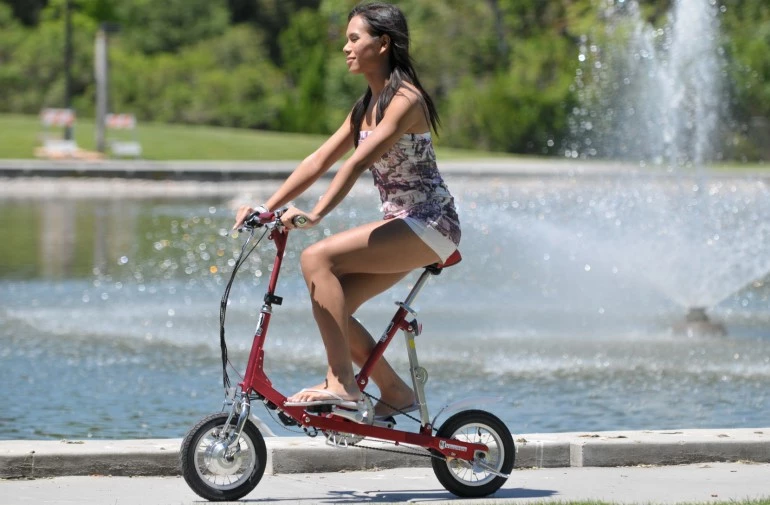
The Velomini, f'rinstance is another contender in this area, with a 180 watt brushless hub motor, a 12 mph (19 km/h) top speed and when it’s not being used it folds into a carrying case. All up, it weighs just 14 kg. the Gocycle costs a lot more, but you can see where the money went.
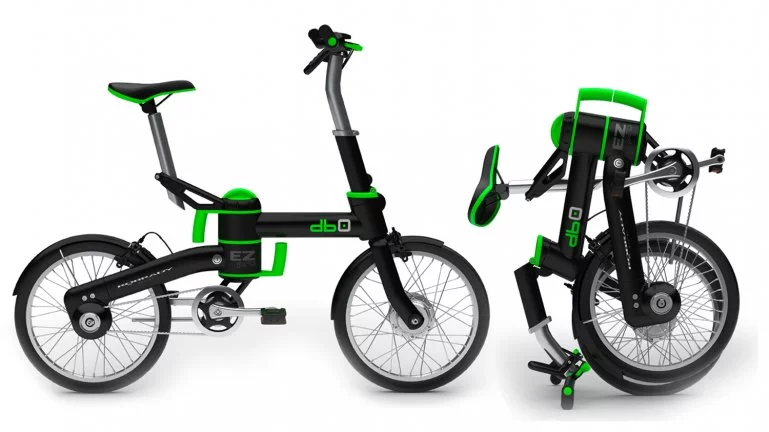
We're also expecting weight and performance approaching that of the Gocycle from Taiwanese Company DK City which showed this Robrady-designed machine (above) recently.

During our research for this story, Editor-in-chief Noel McKeegan recalled the Batribike Lite which he spotted at the London Bicycle Show in 2009. It had a top speed of 12 mph (20 km/h), a range of 12-15 miles (20-24 km) and weighed in at 9.5 kg ready to roll at GBP375 (US$600).
Whatsmore, it folded to 110 x 54.5 x 24 cm (43 x 21.5 x 9.5 inches). Sadly, the model has been dropped from the range, but we expect there will be more fold-up two-wheeled EVs that dip under the 10 kg mark.
There are many innovations in this area, with trade-offs in weight or space sometimes offering significant gains in other areas.
One example of this with a foldable theme is the XOR foldable electric scooter. In this instance, performance is the benefit - for carrying a bit of extra weight and using a slightly larger footprint, you get significantly greater speed and range. Here's a thorough look at the XOR.
Another trade-off of the same ilk, is the TidalForce M-750 x2.0, which is based around the commercially available (and ingenious) Montague Paratrooper folding bike but has a top speed of over 30 mph and range on a single charge is 25 - 28 miles.
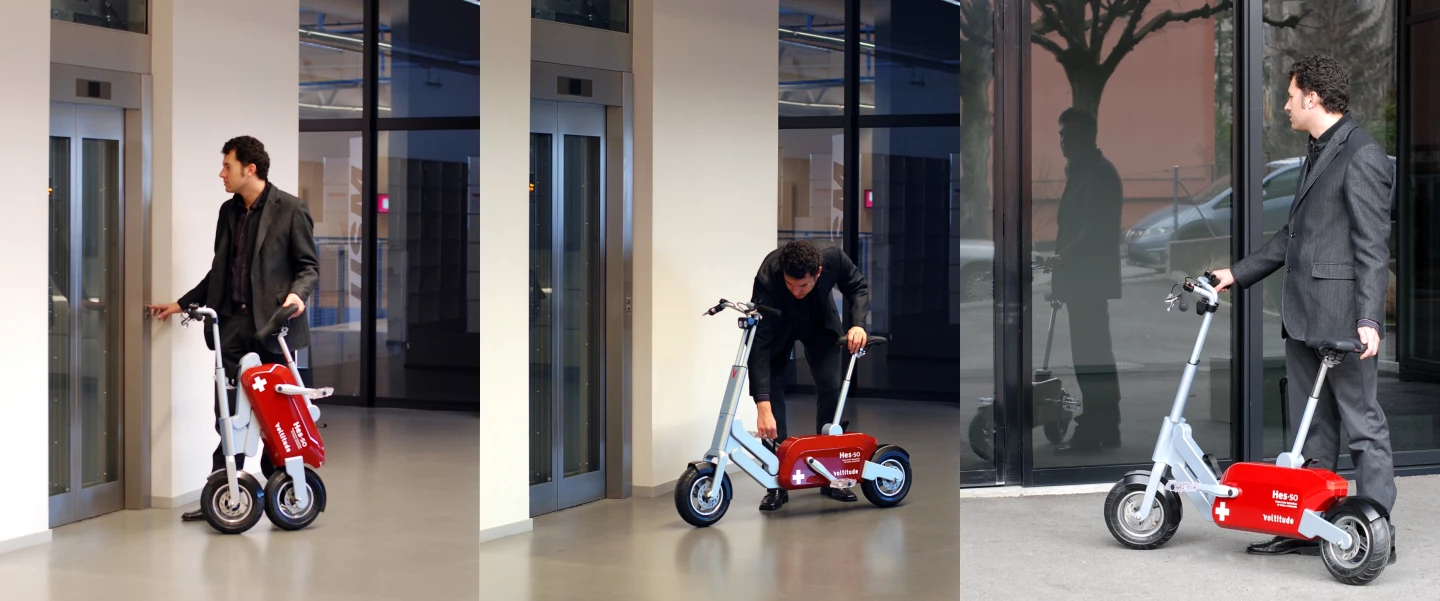
Yet another variation on the theme is the Voltitude - a folding pedal-electric assist scooter which can fold or unfold in one second, and rolls alongside you in lifts, airports and offices.
Trikke's Pon-e
The Trikke Pon-e appears as a contender in the non-conventional Transportation Appliances, by virtue of a unique riding position and its remarkably low weight of just 17 kg. The lightest of the Pon-e range has a limited range of just 10 miles and a top speed of 13 mph, but the slightly heavier 20.5 kg Pon-e 48V has a top speed of 16 mph and a range of 24 miles (38 km) which makes it viable for a lot of things.
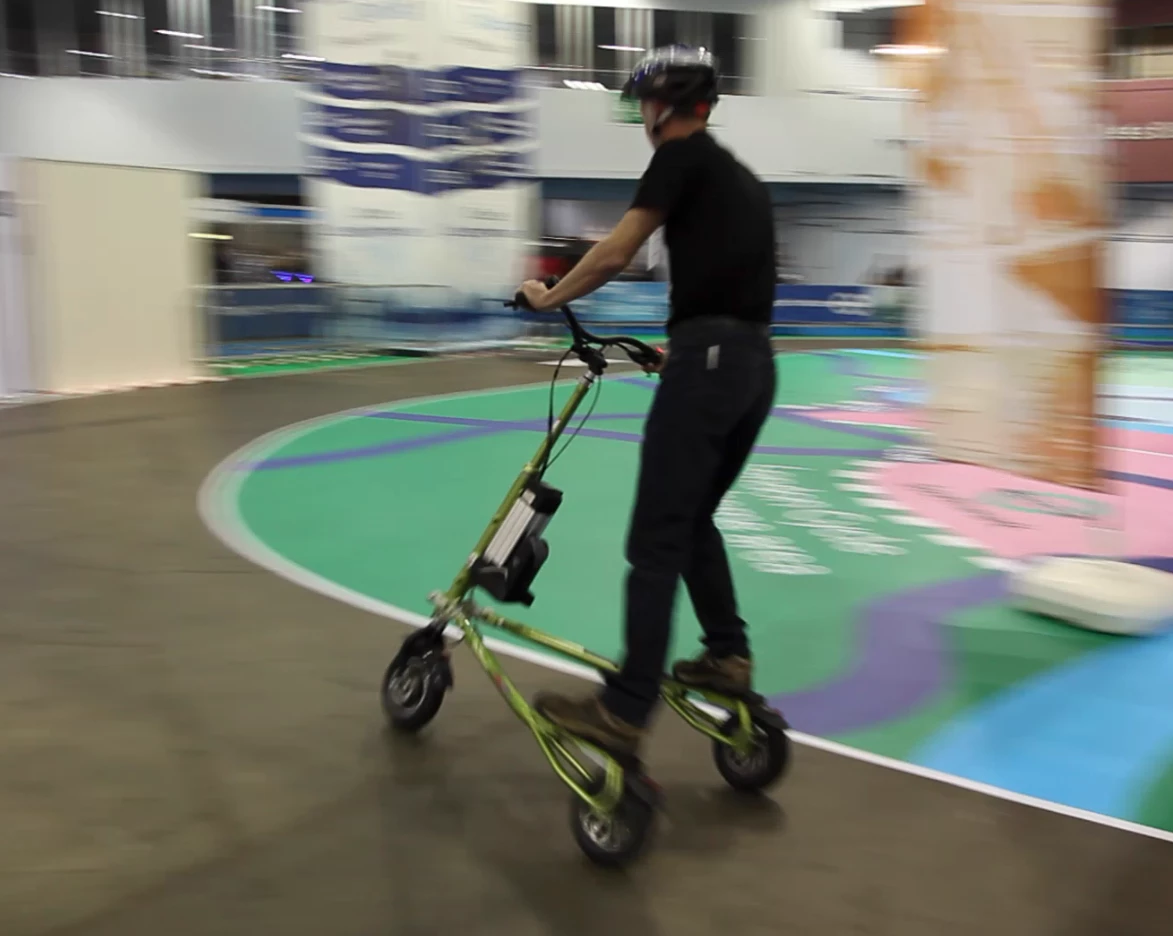
Indeed, the first of those things is a suitability for heavy duty work with policemen or council workers aboard. The Pon-e could quite possibly be made much lighter, but you could never accuse the company of producing a non-robust product.
The Pon-e's big point-of-difference is actually that it is so easy to ride - and sooooo much fun that you will actually want to ride it, because it's an electric carving three-wheeler, and just look at what you can do when you have a bit of confidence.

I rode it and couldn't get the smile off my face. Noel McKeegan rode it and the first thing he said when getting off was, "that's good fun."
The Trikke Pon-e but is obviously very long in comparison to most fold-up electric conveyances, so it won't be suitable for every task, but it will be absolutely ideal for many.
The Pon-e can also be ridden without the electric motor - indeed, it was originally sold that way. By producing a swaying motion, you propel the Pon-e forward at a rate seemingly on a par with a bicycle up to 15 km/h (9.3 mph). The motion also gives a more total body workout than a bicycle.
The Yikebike

We have recently begun referring to a new class of vehicle - the Transportation appliance is roughly defined as a lightweight (10 - 15 kg) EV which folds for carrying and storage. The Honda U3-X and Toyota Winglet look likely to be released at some point, but they're not in production just yet.
The Gocycle is the best of the fold-up bikes, the Velomini the lightest, and in the non-convenional area, there is still only one transportation appliance at market - the Yikebike.

The Yikebike is a miniature, carbon fiber electric penny farthing capable of 25km/h (15 mph) and a range of 10 km (6.2 miles) - it weighs just 11.5 kg, and folds down to a size quite similar to that of a car's spare tire.

Yikebike might well become one of the standard suppliers of last mile transport for automotive manufacturers in the future, as nearly all of the other devices suitable for compact easy stowing are proprietary to the respective manufacturer, and it seems an inevitable trend.
Exoskeletons coming
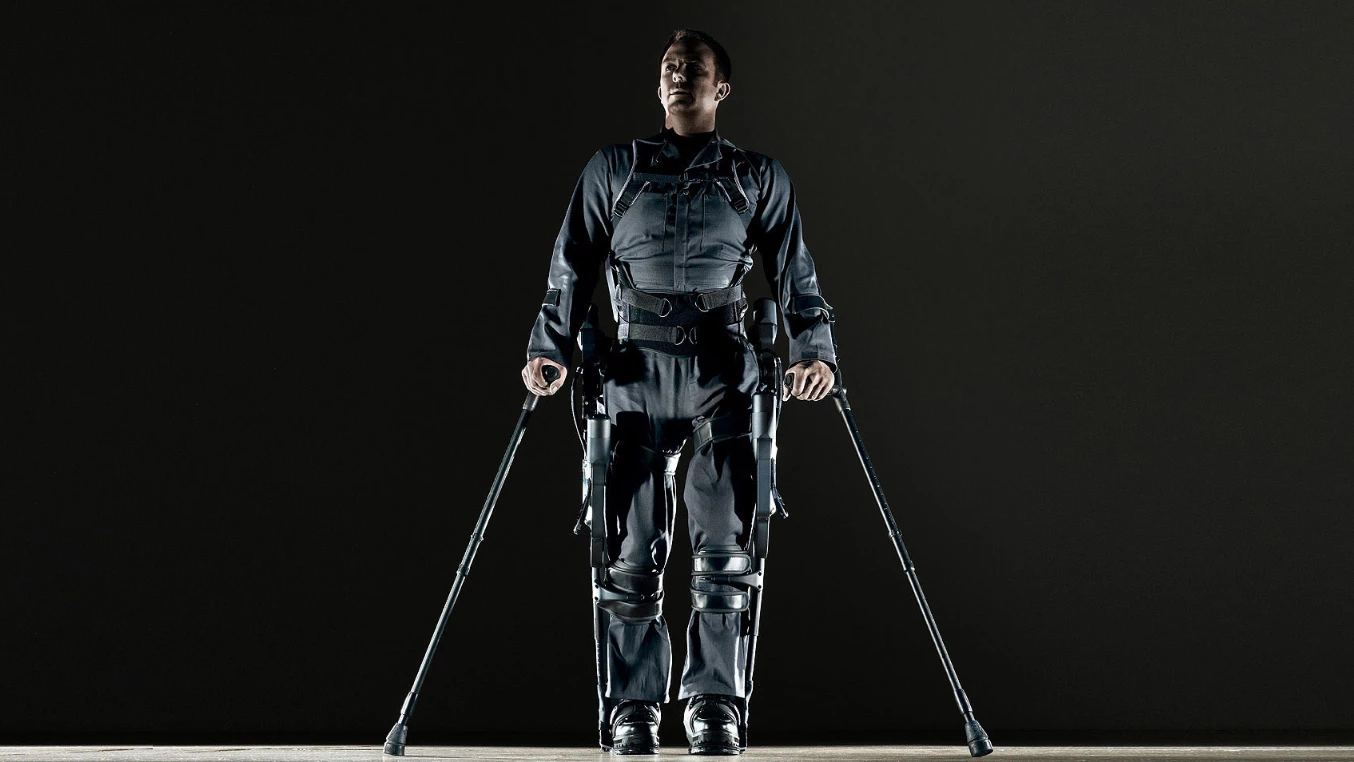
The release the Ekso exoskeleton earlier this year marked a significant point in the commercialization of exoskeletons and don't be surprised to see exoskeletons quickly become yet another significant mobility aid being used in the automobile.

Dozens of mobility assistance exoskeletons are under development in Japan, Korea, Isreal, America and a host of others - even New Zealand has a strong contender in the international field contending for a foothold in a massive new industry. Most of the initial wave of exoskeletons are aimed at the mobility challenged, the paralyzed and the elederly, but another wave of exoskeletons will follow which will also help healthy people run faster, for longer, with a heavy pack - and Ekso is part of the team working on the HULC development prototype with a view to enhancing the capabilities of the American soldier. Development budgets do not come bigger than those provided by American military R&D.; Ekso might be the first to bring an exoskeleton to market, but the list of companies with products in the final testing phase is long and notably includes two auto makers - Toyota and Honda.

Honda's worker assist and walk assist products are among the most mature of all products in this area and they have been under testing for a long time. Toyota has a whole division working on partner and rehabilitation robots. These devices will play a role, and we'll explore the whole exoskeleton area in a full article in the coming weeks.
For now, whipping your exoskeleton out of the trunk for a leisurely but quick 20 mile run across town is still a pipedream - but I'm confident we'll see this happen in the medium term future - certainly within a decade.












